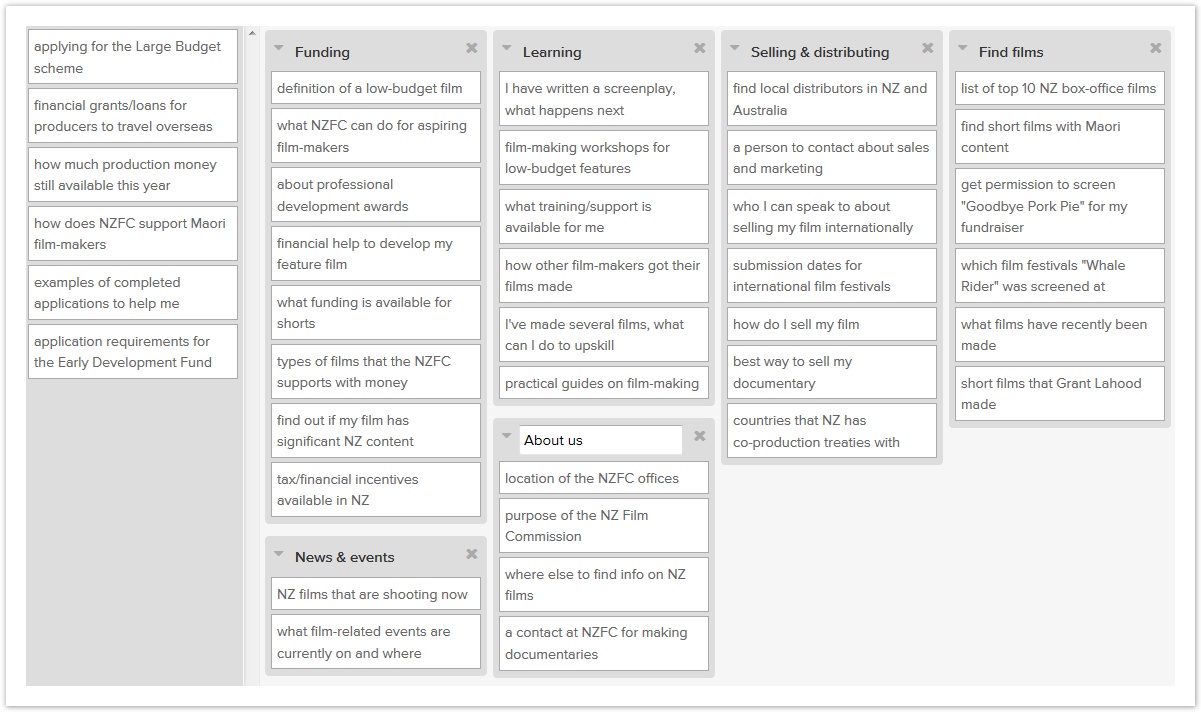...
When we don’t know enough about our users, one of the best methods of finding out more is contextual inquiry – a fancy term for “watch, listen, then ask”. Wikipedia describes it as:
...an approximately two-hour, one-on-one interaction in which the researcher watches the user do their normal activities and discusses what they see with the user
Ideally, we visit the user in their natural habitat (home, office, commute, whatever makes sense for our purposes) and observe them doing tasks related to our website. During or after the observation, we ask them questions about what they did and why, so we can get a clear idea of what they knew, how they behaved, what they wanted, which issues they encountered, and so on.
...
Here's an example from the New Zealand Film Commission: ~get permission, where we asked filmmakers to sort typical content from the Film Commission's website:
We then analyze the data to see if there are patterns in how the participants grouped the items, and what they called those groups.
...
